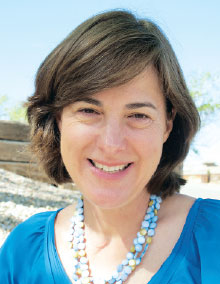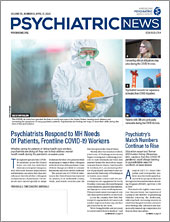Giving take-home naloxone to patients in treatment for opioid use disorder (OUD) is an effective harm-reduction strategy that can save lives, a one-year prospective study in JAMA Network Open suggests. But there is a twist: The patients may end up using the naloxone to reverse overdose in someone else, rather than having someone else administer it to them for an overdose.
The study included 395 patients with OUD enrolled at the University of New Mexico Addiction and Substance Abuse Opioid Treatment Program, an outpatient clinic. All patients were treated with buprenorphine, methadone, or naltrexone and were given two doses of take-home naloxone combined with opioid overdose education. By the study’s end, 73 of the participants (18%) had used naloxone to perform 114 opioid reversals in the community, all of which were related to heroin. Of those, 86.6% said that they had used their naloxone to reverse an overdose in a friend, relative, acquaintance, or significant other.
“We see providing take-home naloxone as a significant, strategic, targeted response,” lead author Joanna G. Katzman, M.D., M.S.P.H., a professor in the Department of Neurosurgery at the University of New Mexico School of Medicine in Albuquerque, told Psychiatric News. “If you are going to choose one area in the whole clinical system to provide naloxone, your best bang for the buck is an opioid treatment program.”
Katzman should know. She and her colleagues had conducted a similar study with patients at the University of New Mexico Pain Center several years ago, and none of the 164 patients in the study had an opioid overdose or used their naloxone kits to perform an overdose reversal for someone else. The study was published online in Substance Abuse on November 1, 2016.
“We did that study to show that yes, you can do this [intervention] in the context of pain centers, but that’s a low-risk population, so I thought we would use the same protocol for a study in our sister clinic—the addiction clinic,” Katzman explained.
Katzman said the results indicate a need for policy change, especially because so few patients with OUD are prescribed naloxone: In the year before enrollment, only 4.5% of the patients in the study had received a prescription for the drug.
“I feel that it should be mandated that we provide take-home naloxone in the setting of an opioid treatment program. It will help patients and the community by saving lives and keeping families intact, even if it’s not used on them [the patients in treatment],” Katzman said.
“If you have a patient with opioid use disorder, strongly consider providing take-home naloxone and overdose education in the clinic,” Katzman added. “This could also apply to emergency room physicians and other clinicians who see patients come in with substance use disorder or a recent opioid overdose, and inpatient clinicians who might be taking care of someone who had an overdose with complications. You may not want to discharge a patient without giving the patient a kit for naloxone.”
This research was supported by a grant from Kaleo Pharma, which also donated the Evzio naloxone kits used in the study. ■
“Association of Take-Home Naloxone and Opioid Overdose Reversals Performed by Patients in an Opioid Treatment Program” is posted
here.
“Co-prescription of Naloxone as a Universal Precautions Model for Patients on Chronic Opioid Therapy—Observational Study” is posted
here.

